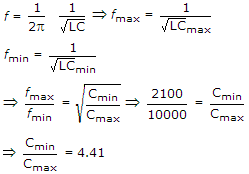Electronics and Communication Engineering - Communication Systems
Exercise : Communication Systems - Section 3
- Communication Systems - Section 13
- Communication Systems - Section 25
- Communication Systems - Section 24
- Communication Systems - Section 23
- Communication Systems - Section 22
- Communication Systems - Section 21
- Communication Systems - Section 20
- Communication Systems - Section 19
- Communication Systems - Section 18
- Communication Systems - Section 17
- Communication Systems - Section 16
- Communication Systems - Section 15
- Communication Systems - Section 14
- Communication Systems - Section 1
- Communication Systems - Section 12
- Communication Systems - Section 11
- Communication Systems - Section 10
- Communication Systems - Section 9
- Communication Systems - Section 8
- Communication Systems - Section 7
- Communication Systems - Section 6
- Communication Systems - Section 5
- Communication Systems - Section 4
- Communication Systems - Section 3
- Communication Systems - Section 2
31.
If D is mouth diameter of a paraboloid reflector, its directivity is proportional to
Answer: Option
Explanation:
Directivity of parabolic reflector =  .
.
32.
A noiseless 3 kHz channel can't transmit binary bit at the rate
Answer: Option
Explanation:
Noiseless channel: Nyquist's Theorem - If the signal has V discrete levels over a transmission medium of bandwidth H, the maximum data rate = 2H log2 V bits/sec.
A noiseless 3-kHz channel cannot transmit binary signals at a rate exceeding 6000 bps (= 2 x 3000 log2 2).
33.
In an AM wave the carrier and one of the side bands is suppressed. If m = 1, the percentage saving in power is
Answer: Option
Explanation:
 .
.
34.
Assertion (A): An electronic tuner uses varactor diode
Reason (R): The capacitance of a varactor diode depends on the magnitude of reverse bias.
Answer: Option
Explanation:
A varactor diode has a variable capacitance which depends on reverse bias. It is a very convenient device for tuning.
35.
A superheterodyne receiver is to operate in the frequency range 550 kHz - 1650 kHz, with the intermediate frequency of 450 kHz. Let  denote the required capacitance ratio of the local oscillator and I denote the image frequency (in kHz) of the incoming signal. If the receiver is tuned to 700 kHz, then
denote the required capacitance ratio of the local oscillator and I denote the image frequency (in kHz) of the incoming signal. If the receiver is tuned to 700 kHz, then
 denote the required capacitance ratio of the local oscillator and I denote the image frequency (in kHz) of the incoming signal. If the receiver is tuned to 700 kHz, then
denote the required capacitance ratio of the local oscillator and I denote the image frequency (in kHz) of the incoming signal. If the receiver is tuned to 700 kHz, thenAnswer: Option
Explanation:
Image frequency = 700 + 2 x 450  1600 kHz
1600 kHz
fmax = 1650 + 450  2100 kHz
2100 kHz
fmin = 550 kHz + 450  1000 kHz
1000 kHz

R = 4.41, I = 1600 kHz.
Quick links
Quantitative Aptitude
Verbal (English)
Reasoning
Programming
Interview
Placement Papers